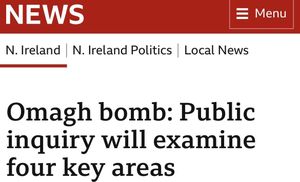After weeks of devastation, Los Angeles' Eaton and Palisades wildfires have finally been contained, but the road to recovery is fraught with challenges and community concerns.
California officials confirmed the wildfires were contained as of January 31, 2025, nearly three weeks after igniting on January 7. Tragically, the fires were responsible for at least 29 fatalities and left tens of thousands homeless, with damages estimated to be at least $275 billion. The relentless flames destroyed over 12,000 structures, including homes, businesses, and community landmarks, marking this as one of the worst wildfire seasons on record for the region.
The aftermath has shifted attention to cleanup efforts, especially concerning hazardous waste left behind by the fires. Among the most pressing issues is the Environmental Protection Agency's (EPA) decision to use Lario Park in Irwindale as a temporary processing site for debris from the Eaton Fire. Local residents, like Ceci Carroll of Duarte, are extremely worried about the potential risks this poses to their community. “I’m concerned about the community and also the school districts here, where we have children,” Carroll said. “We’re dealing with the site with the chemicals and hazardous materials. Parents are absolutely concerned.”
The challenges encompass not only the physical cleanup but also managing hazardous materials such as paints, pesticides, solvents, and lithium-ion batteries. The state and federal officials have been met with intense opposition from residents during town hall meetings. “How was the site chosen? Why weren’t we consulted or notified?” residents questioned, echoing sentiments of frustration and unease expressed during the public forums. Many locals marched shouting, “Shut it down!” voiced deep concerns over transparency and health safety.
Officials have attempted to allay fears, stating they will monitor air quality, sample soil, and control dust during the cleanup operations. Tara Fitzgerald, EPA coordinator, emphasized the agency’s experience managing hazardous waste disposal following major fires. “We did the exact same thing for the Woolsey, Santa Rosa, and Napa fires, and we did not have any impacts to the community during the entire process,” she said.
Despite these reassurances, community leaders like Los Angeles County Supervisor Hilda Solis raised alarms over the existing disparities faced by black and Latino communities, highlighting statistical risks and existing pollutants already affecting their health. “The removal of these materials should not come at the cost of creating a toxic environment for communities already disproportionately impacted by pollution,” Solis commented, stressing the need for equity and safety for vulnerable populations.
Investigations from the California Department of Forestry and Fire Protection (Cal Fire) revealed the fires took off rapidly due to high winds and dry vegetation, leading to what experts termed “historic” fire conditions. “That’s the dickens,” said Anthony Marrone, Los Angeles County Fire Chief, reflecting on the extreme fire behavior experienced during the incidents. The weather conditions were so severe; at times, 1,000 buildings were reported to be on fire simultaneously, overwhelming firefighters.
Initial response strategies came under scrutiny, with the Los Angeles Fire Department facing criticism for not deploying sufficient resources prior to the fire eruption. Despite warnings from the National Weather Service, there was no unified response plan to process the fast-moving threat. This fragmentation within the emergency management structure has raised calls for comprehensive reviews of protocols. Mayor Karen Bass, who was away during the onset, emphasized the need for accountability, promising, “We are going to conduct thorough assessments of what worked and what did not.”
Moving forward, questions remain concerning the lessons learned from these devastating wildfires. Experts suggest California will need to develop new emergency response playbooks, focusing on proactive measures for evacuations and resource mobilization if similar extreme weather patterns arise again. “We might need to take lessons from hurricane preparedness seeing how wildfires now pose comparable threats,” said one emergency management official.
The California wildfires and their aftermath have highlighted the intense relationship between weather, ecological health, and community safety. With climate change exacerbated weather patterns presenting ever-growing wildfire risks, it becomes increasingly urgent for regional planners to innovate solutions to protect at-risk communities.
Local coping strategies for recovery may also involve community engagement and restoration efforts beyond immediate cleanup, with residents advocating for more sustainable practices and improvements to existing infrastructure. “It’s hard to have confidence when they’ve really done this behind our backs,” voiced Laura Jasso of Duarte, who remains vigilant about the handling of hazardous materials.
Although the flames are under control, and the immediate threat seems to have subsided, the comprehensive recovery from the Eaton and Palisades wildfires will demand hard work and collaboration among officials, residents, and stakeholders over the long term. “The fact is, it’s here right now. And we have to just acknowledge the safety of our students, the concerns of our families,” Jasso concluded, emphasizing the resolve of the community to navigate these adversities.



